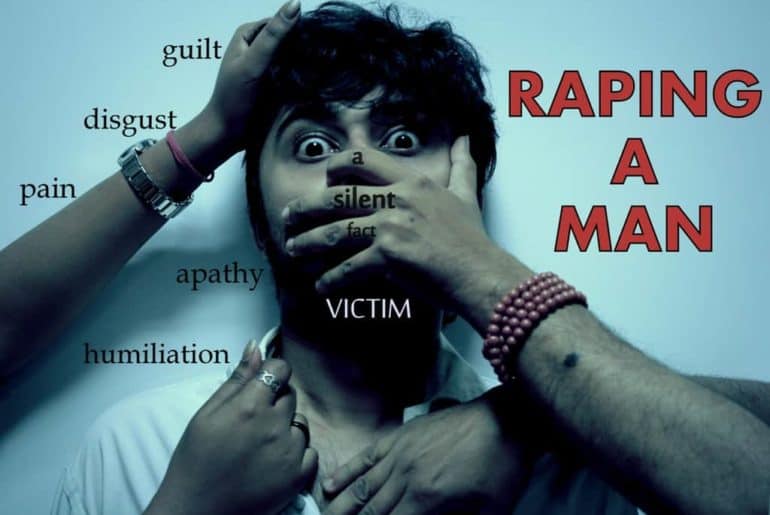The discourse on rape of men has never shaped up in a society where irrespective of the sexes “consent” and “no” are considered redundant words.
Wikipedia defines rape as, “A type of sexual assault usually involving sexual intercourse or other forms of sexual penetration carried out against a person without that person’s consent.” Notice the use of the word “person” that should naturally include women, men, transgender, and all other recognized or unrecognized genders. But unfortunately, the law of the land has devoid consideration of men as victims of rape crimes. In August 2014, 4 men in Muzzafarnagar, Uttar Pradesh were booked for sodomizing a 16-year-old boy in a government-run protection home. A year later, in April 2015 a Madarsa teacher was booked for attempting to sodomize a male student in the same town. We use the word sodomy (anal intercourse) instead of rape here, which no longer is a criminal offence after the Supreme Court amended the language of Section 377 of IPC in September 2018 to decriminalize same-sex relations.
It was a landmark decision that freed the LGBTQ community to come out of the closet without facing the fear of legal scrutiny. But at the same time, it abridged adult men of their only legal remedy in case of forceful anal penetration. The rape laws in our country treat men only as perpetrators and not as victims. According to Section 375 of the IPC only a man can commit rape on a woman without her consent, or with consent but under the fear of death, or with consent but under false pretences. It makes no mention of rape as a crime against men and leaves section 377 to cover that.
“A huge contributor to the social stigma around male victims of sexual assault is the lack of a functioning legal framework for them to back on,” writes Mardaangi, an Instagram page with around 3000 likes that uploads stories and mentions of sexual assaults on men.
A 2nd-year law student at Delhi University, talking about the discriminative rape laws in our country, on a condition of anonymity says, “As a welfare state our laws are more concerned towards the upliftment of downtrodden section of the society. Women and children due to historic injustice have always been given special protection under the law.” He added, “Men, on the other hand, have always been considered to be the dominating members as they are mostly in the position of power.”
Lack of consent remains an indispensable factor that naturally should make cases of unwilling sodomy come within the ambit of rape. Despite that, not only the legal framework of our country but the social conditioning too makes it tremendously tough for men to report rape crimes and avail a timely justice. The common notion that men are not vulnerable and that they always crave for sex has diluted the conversation around rape of men. Friends, peers and even the authority will likely deride a male victim and label the incident redundant leaving him traumatized.
Rape laws in India have developed over time. The law whose genesis can be traced in Macaulay’s Indian Penal Code of 1860 got amended many times before reaching its current stage. Changes include the inclusion of custodial rape, which criminalized rape by a public servant in 1983 and the Criminal Law (Amendment) Act 2013 followed by the Nirbhaya rape case. In 2012, The Protection of Children from Sexual Offences Act or POCSO was passed which made rape against a child under the age of 16 a criminal offence and laid provisions for the investigation of the crime in a manner that the child doesn’t get traumatized. This law is gender-neutral and treats male children as victims as well. A legal framework for the protection of adult males can be a next step in the evolution of rape laws.
Feature Image credit: themileage.org
Priyanshu




Comments are closed.